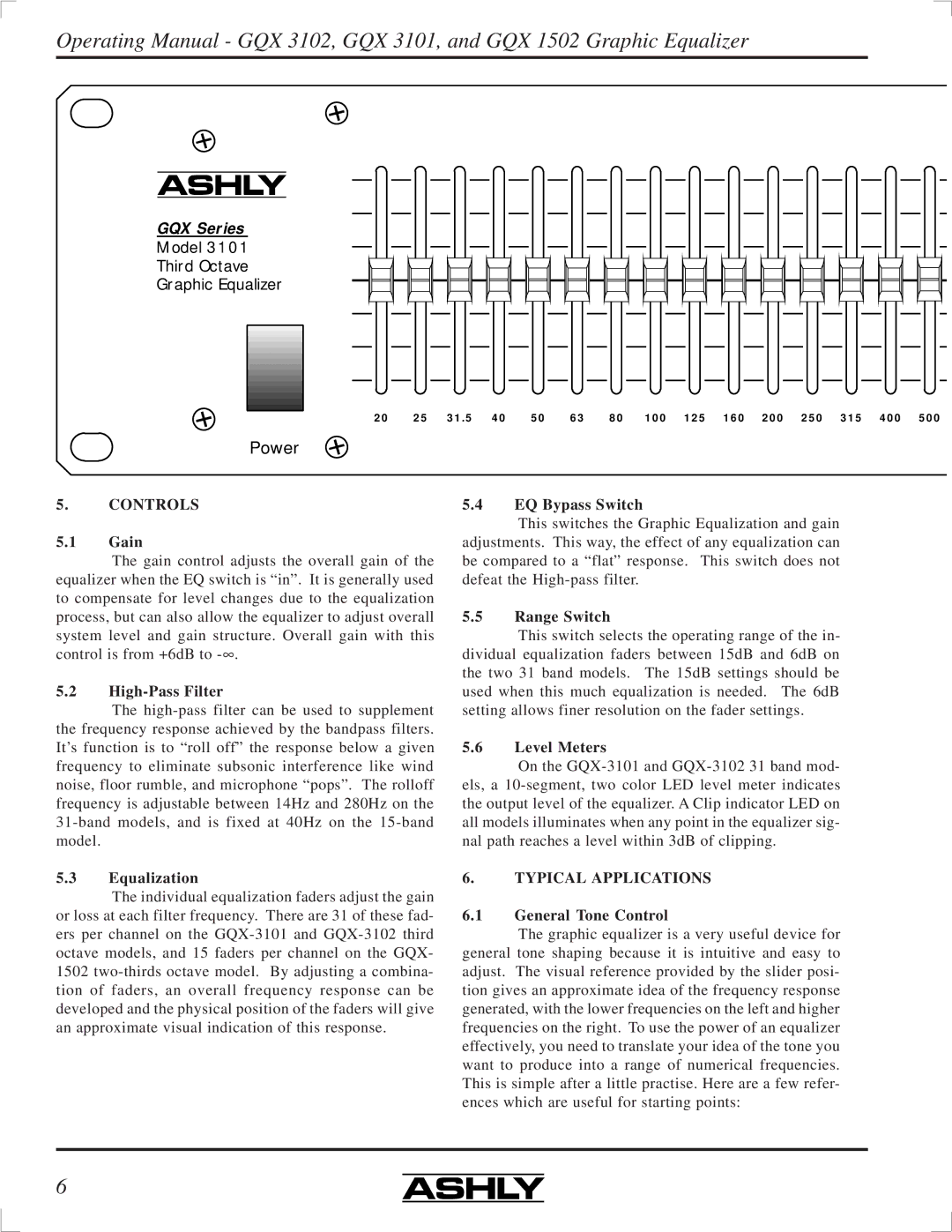
Operating Manual - GQX 3102, GQX 3101, and GQX 1502 Graphic Equalizer
GQX Series
Model 3101
Third Octave
Graphic Equalizer
20 | 25 | 31.5 | 40 | 50 | 63 | 80 | 100 | 125 | 160 | 200 | 250 | 315 | 400 | 500 |
Power
5.CONTROLS
5.1Gain
The gain control adjusts the overall gain of the equalizer when the EQ switch is “in”. It is generally used to compensate for level changes due to the equalization process, but can also allow the equalizer to adjust overall system level and gain structure. Overall gain with this control is from +6dB to
5.2High-Pass Filter
The
5.3Equalization
The individual equalization faders adjust the gain or loss at each filter frequency. There are 31 of these fad- ers per channel on the
5.4EQ Bypass Switch
This switches the Graphic Equalization and gain adjustments. This way, the effect of any equalization can be compared to a “flat” response. This switch does not defeat the
5.5Range Switch
This switch selects the operating range of the in- dividual equalization faders between 15dB and 6dB on the two 31 band models. The 15dB settings should be used when this much equalization is needed. The 6dB setting allows finer resolution on the fader settings.
5.6Level Meters
On the
6.TYPICAL APPLICATIONS
6.1General Tone Control
The graphic equalizer is a very useful device for general tone shaping because it is intuitive and easy to adjust. The visual reference provided by the slider posi- tion gives an approximate idea of the frequency response generated, with the lower frequencies on the left and higher frequencies on the right. To use the power of an equalizer effectively, you need to translate your idea of the tone you want to produce into a range of numerical frequencies. This is simple after a little practise. Here are a few refer- ences which are useful for starting points:
6
